Corridor design in Khrushchev: interesting ideas
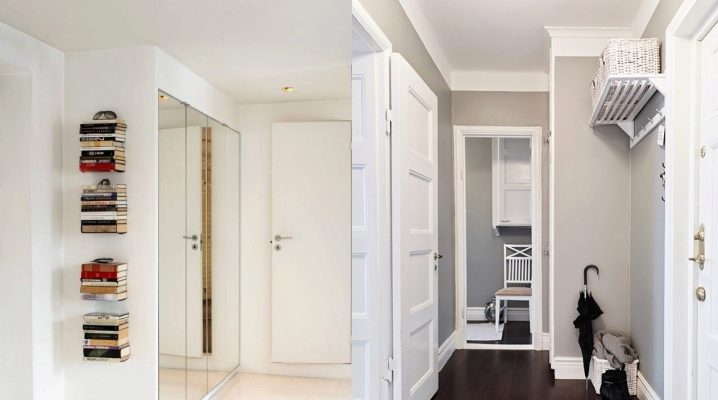
We inherited the Khrushchevs from the Soviet era. As a rule, in such small apartments there are frankly small and dark nooks, called corridors and hallways. But it is from this modest space that the first impression of the apartment depends.
It is difficult, but possible, to make the interior of the corridor practical and original. The main thing is to know some tricks and secrets.
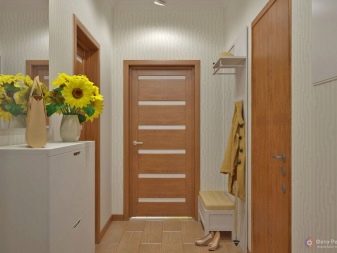

Peculiarities
The design of the corridor in "Khrushchev" should be practical, stylish and at the same time pleasing to the eye. The interior of such a room in an apartment should be as light, bright and comfortable as possible.
The dimensions of the corridor are small: 3 sq. m, or even less - an area on which you will not particularly roam, and besides, the layout of many apartments, at the same time, leaves much to be desired. Often, the corridor is a see-through, small and dark room.
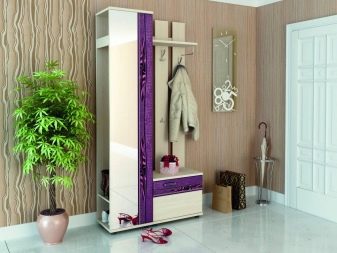
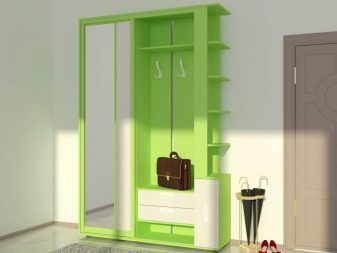
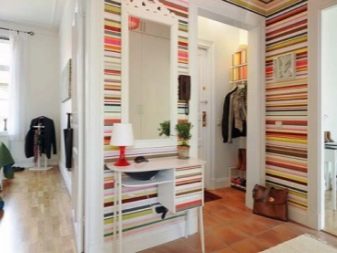
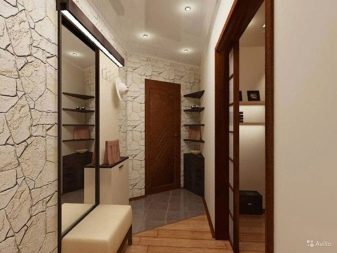
Many owners of small apartments are trying to increase the area of the corridor by demolishing the walls and redeveloping the apartment. But this is a completely radical method.
You can equip a beautiful hallway thanks to the design:
- The main "classic" corridor design technique is the use of light, pastel colors in the interior. It is also common to see vertical stripes on the walls that visually raise the ceiling. In addition, the use of cells, diamonds, diagonal, herringbone pattern also visually expands the space. This technique can often be seen on the floor.
- One of the main aspects of the interior that you should pay attention to is lighting... In this case, there is never too much light: light around the perimeter (or in a chaotic arrangement) on the ceiling, illumination of furniture, mirrors and accessories, additional lighting from shades and lamps. The more light the better.
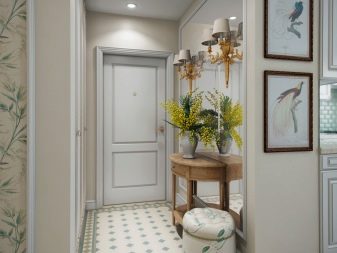
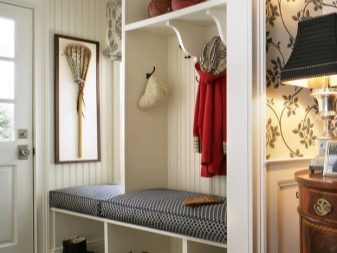
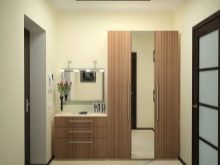
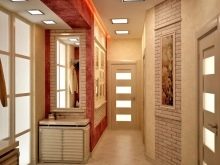
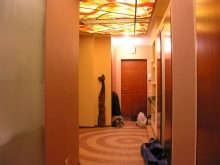
- Use of mirrors and mirror surfaces. Everyone knows the ability of a mirror, coupled with directional light, to expand space. The same ability, albeit slightly less, is possessed by a glossy surface.
- Clever division of adjacent rooms. The corridor is where many doors meet. They often open into the interior of this room. Not only is it unsafe, but an open door can completely block the entire passage. Therefore, the doors should be outweighed in such a way that they open in the other direction.
And you can also replace them with accordion doors or books, or remove them completely and leave in their place a laconic and stylish doorway or arch.

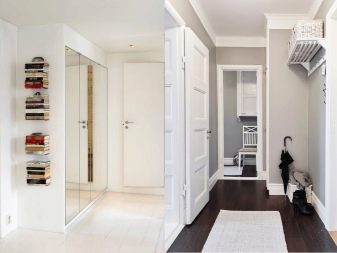
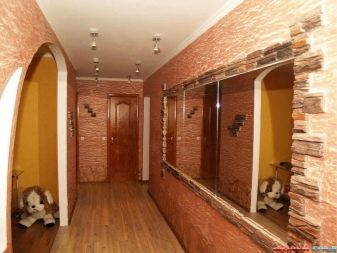
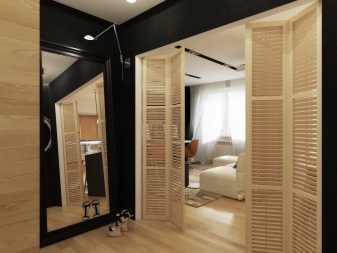
- Unity of style. When the interior is clumsy and there is no single concept, there is a feeling of clutter and mess. And excess garbage and trash eats up an already small space.
- Furniture in the corridor should be multifunctional and “fit” into the interior as much as possible. If there is an opportunity to build furniture into niches, closets, then you should not miss it at all. Furniture ensembles should be placed vertically.
If there is a wardrobe - then under the ceiling, if there are several shelves, and not one large one. It is worth paying attention to the depth of the furniture. Cabinets, pencil cases, chests of drawers should be roomy, but narrow.
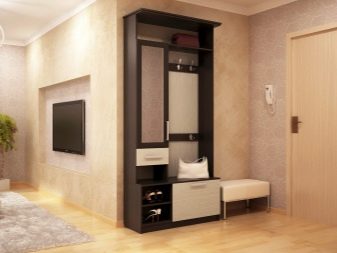
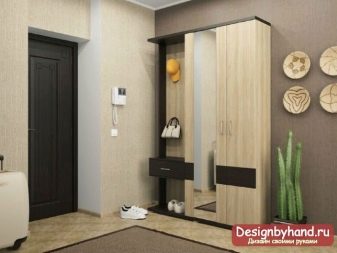
- Another favorite technique that can be found in hallways and corridors is attraction of exterior elements into the interior... It can be wallpaper with landscapes, frescoes, panoramic stickers, images of trees, flowers, fences, vehicles. This is all sorts of imitation of finishing materials: the use of decorative stone, wallpaper with brick or walls with it, flooring "like a stone".And also it can be interior items, for example, benches or even lanterns.
- Using all sorts of accents of color, light and decor... When a person's gaze clings to something and stops, it becomes completely unimportant that the room is small.
Using these recommendations, you can make a stylish interior in the corridor. Moreover, each design element can be very entertaining and practical.
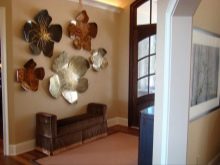
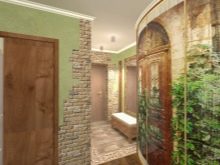

Design options
Ceiling
The ceiling in the hallway can be simply whitewashed or painted with water-based paint. But just a white ceiling looks somehow boring, besides, additional lighting cannot be built into such a ceiling. The solution to the problem will be a plasterboard structure or stretch ceiling.
- Plasterboard structures on the ceiling allow you to clearly zone the space. Each such zone can have its own lighting. Where a person is preening - a bright "daylight" light so that you can appreciate the image before going out into the street. Where the passage area is diffused light. Plasterboard construction can serve as a kind of frame for a bright picture or pattern on the ceiling.
- Tension cloth - a fairly popular way of framing the ceiling. It can be monochromatic matte, as well as glossy. The advantage of the latter is that the built-in light is reflected in it, adding the missing space. Although a very uncommon solution would be to use a canvas with photo printing. A bright drawing will become the very accent that attracts attention.
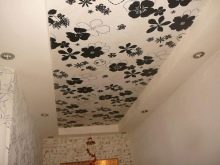
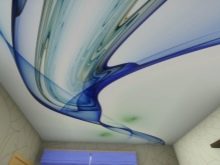

Walls
The corridor interiors are dominated by light and pastel colors. White is too easily soiled for a walk-through room, but beige, gray, pink, peach, sand is ideal. But when you want to get away from the classic design, bright and juicy colors, for example, yellow, orange, are quite acceptable. Moreover, such colors can be used both totally and "in detail" - to highlight one area or use in accessories.
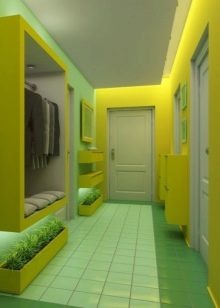
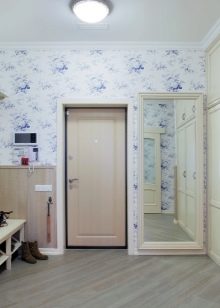
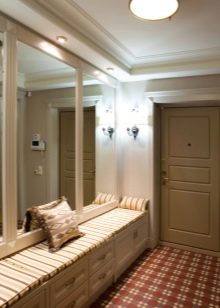
The wallpaper in the corridor can be original, with a bright large pattern, or with a landscape, an abstract picture. And you can combine several types of coverage (as well as wallpaper with each other, and different finishing materials).
An unbroken but already gaining popularity design trick is to use the corridor as a gallery. On the walls along its entire width there are paintings, photographs, images, including various decor stickers (lanterns and animals, abstractions, "windows" on landscapes).
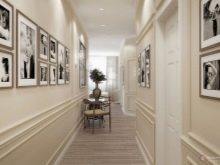


By the way, a great trick is to use the silhouette of a tree, which becomes a hanger.
Of course, you can't hang heavy fur coats and down jackets on such a tree, but hats and scarves are fine. In addition, decorative stickers can partially or completely replace the mirror. There are many options for mirror images.
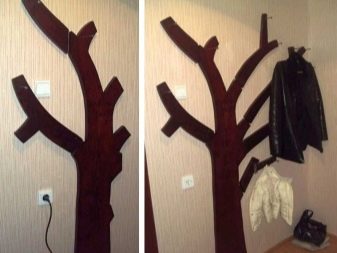
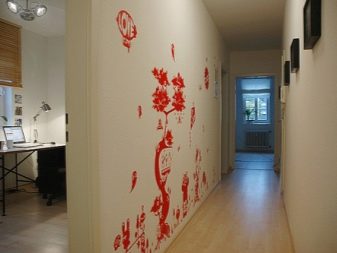


Floor
The floor covering in the walk-through room should, above all, be durable, but no one forgets about aesthetics. If desired, any material, be it linoleum, tile or laminate, can be organically integrated into the interior and become a design accent.
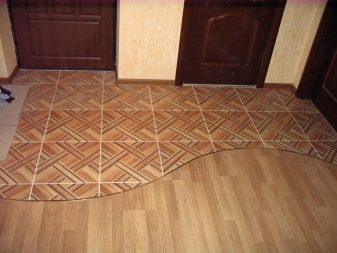
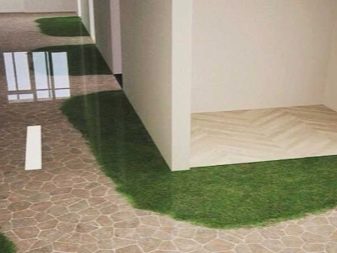
As a rule, there is a pattern on the floor for a stone or tile, imitation of wooden parquet. But no one forbids combining several floor coverings together. Moreover, a well-thought-out drawing with smooth lines on the floor can significantly expand the space. In this way, you can brighten up the transition between different materials, for example, between tiles and laminate. In addition, this will allow you to divide the area of the corridor into zones.
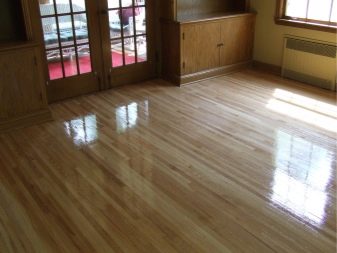
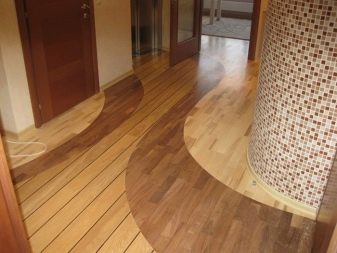
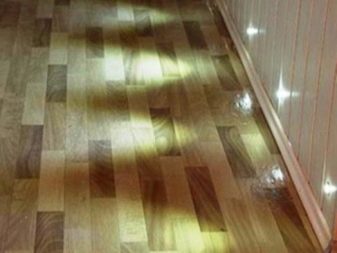
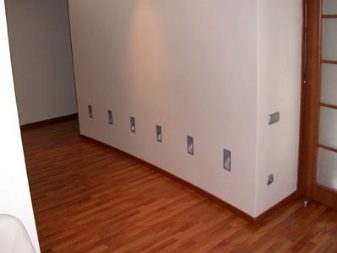
The technology of self-leveling floors offers a real scope for creativity. Not only does the surface remain perfectly flat, but it can also have a completely different pattern - from patterns to all kinds of realistic images (sea surf, water inhabitants, grass, etc.).
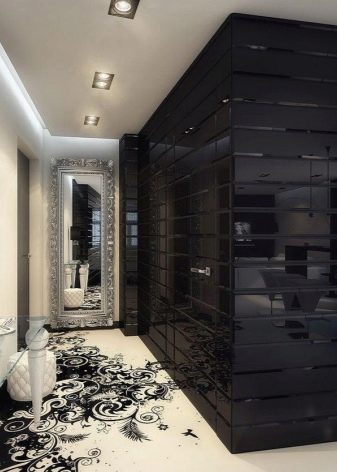
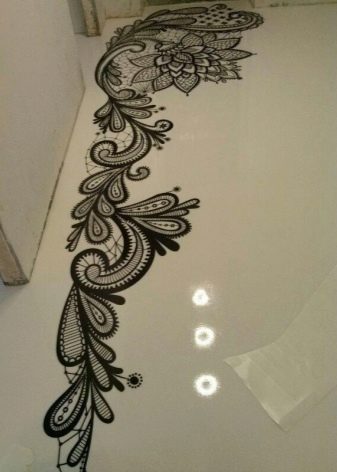
Furniture and accessories
You cannot put the first furniture you come across in the dimensions of small corridors.Furniture ensembles should be as practical, laconic and as multifunctional as possible. Standard kits can be a solution for arranging a small space.
The options that can fit into it as much as possible usually meet several requirements:
- the depth of structures is minimal;
- the kit consists of several things, there is nothing superfluous;
- there are hints of design delights in the form of smooth lines, unusual designs.
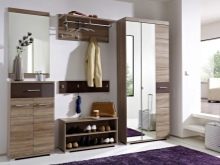
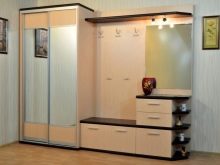
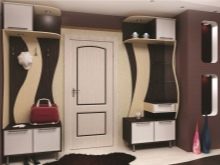
Finding such furniture sets is difficult, but possible. Often, modular furniture becomes a salvation in the arrangement of the corridor. But perhaps only furniture made according to individual measurements and sketches will become the very kit that is needed in the room. Photo printing on furniture can make a set unique. Landscape images add perspective, while others give room to the imagination.
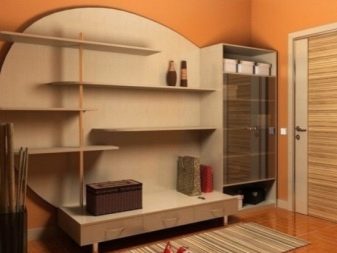
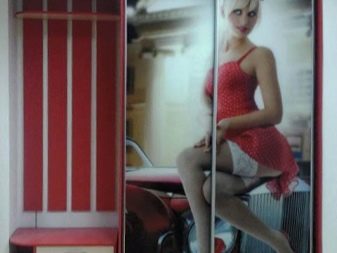

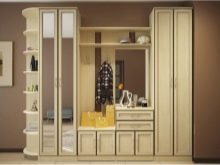
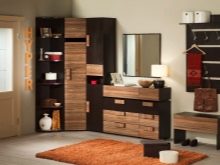
The corridor is the place where you want as much space and light as possible. Therefore, many abandon furniture closed cabinets in favor of open counterparts. For example, clothes hangers do not hide in the closet, but become independent interior items. Very bright, unusual and real accents.
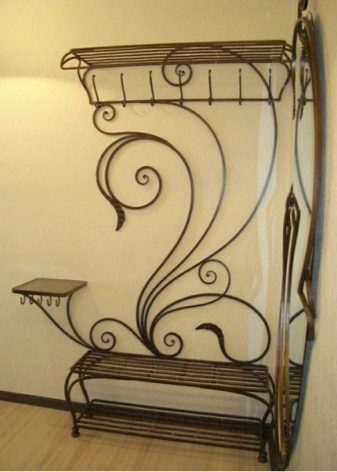
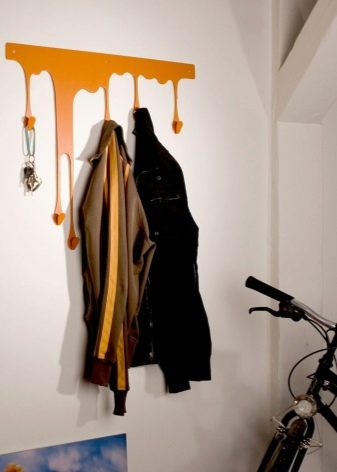
Shoe benches combined with poufs, small shelves with additional lighting, illuminated design niches take their rightful place in the corridor, because they meet the criterion of multifunctionality.
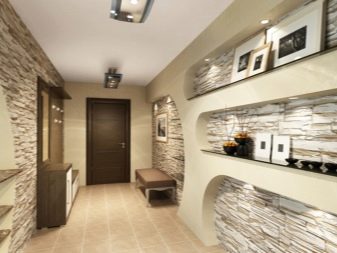
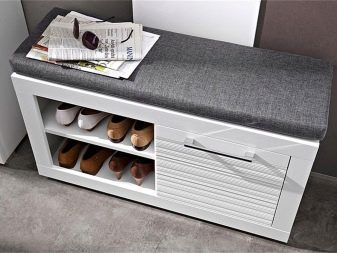
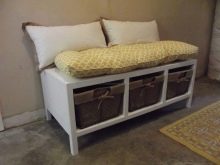
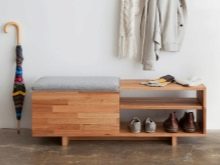
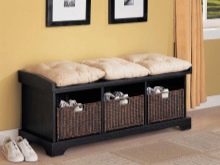
And not the last place in the design of through rooms is played by lighting. The extra light is more important here than anywhere else. Lighting sources can be placed in furniture, on shelves, or placed on the ceiling.
And you can additionally illuminate the mirror. It looks incredibly stylish. The right lighting can work wonders. Light from below along the perimeter of the corridor can add some airiness to the entire room.
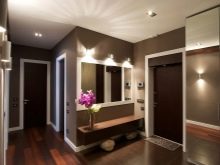

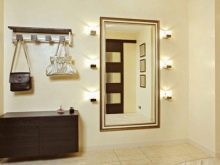
Additional lighting does not have to be white. In LED strips, lamps, a wide variety of color variations can be present.
The main thing in the design of the corridor is that they are not afraid of self-expression. Then the room will be filled with personality and bright accents, from which it is impossible to take your eyes off. Do not be afraid of bold, extraordinary ideas.
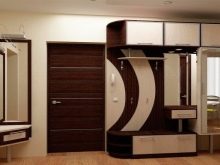
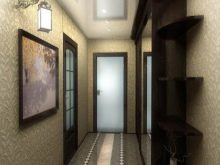
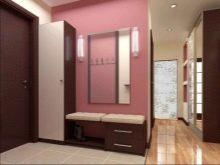
A small hallway, not a reason for disorder, our video is proof of this.













The comment was sent successfully.